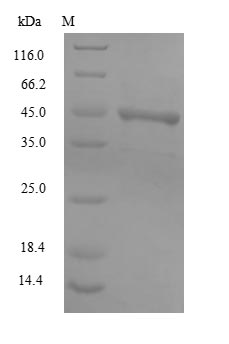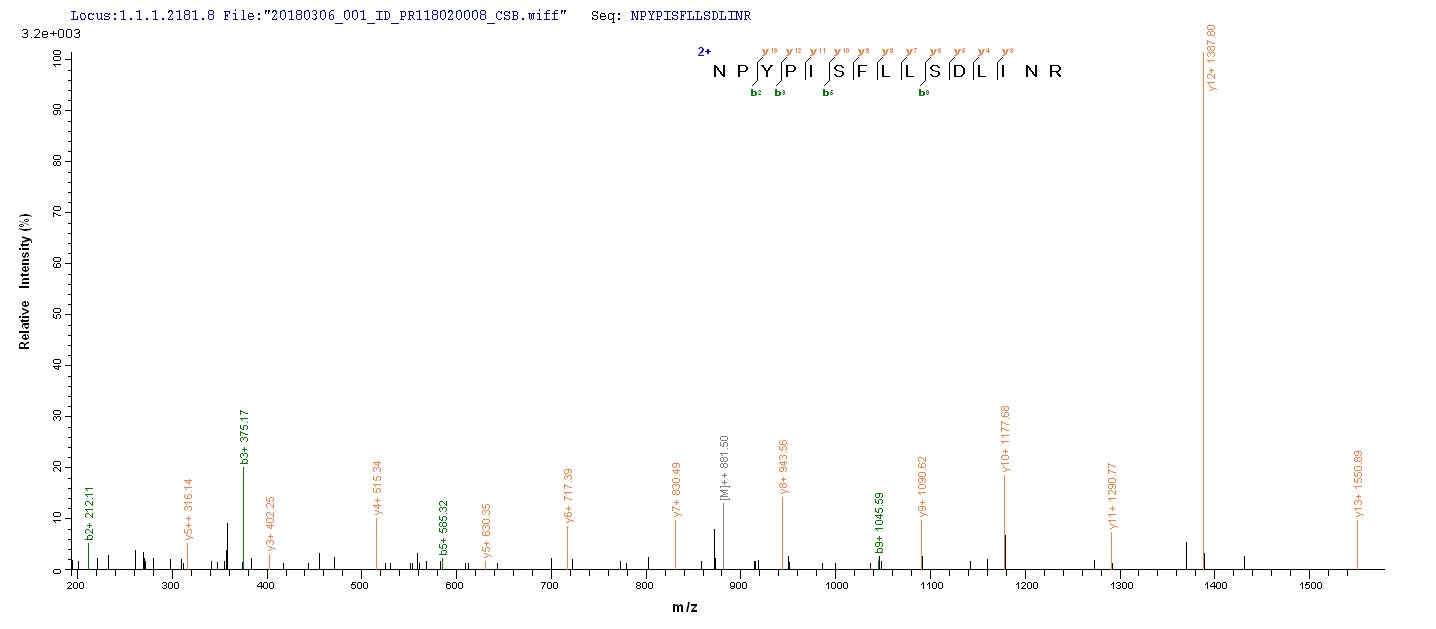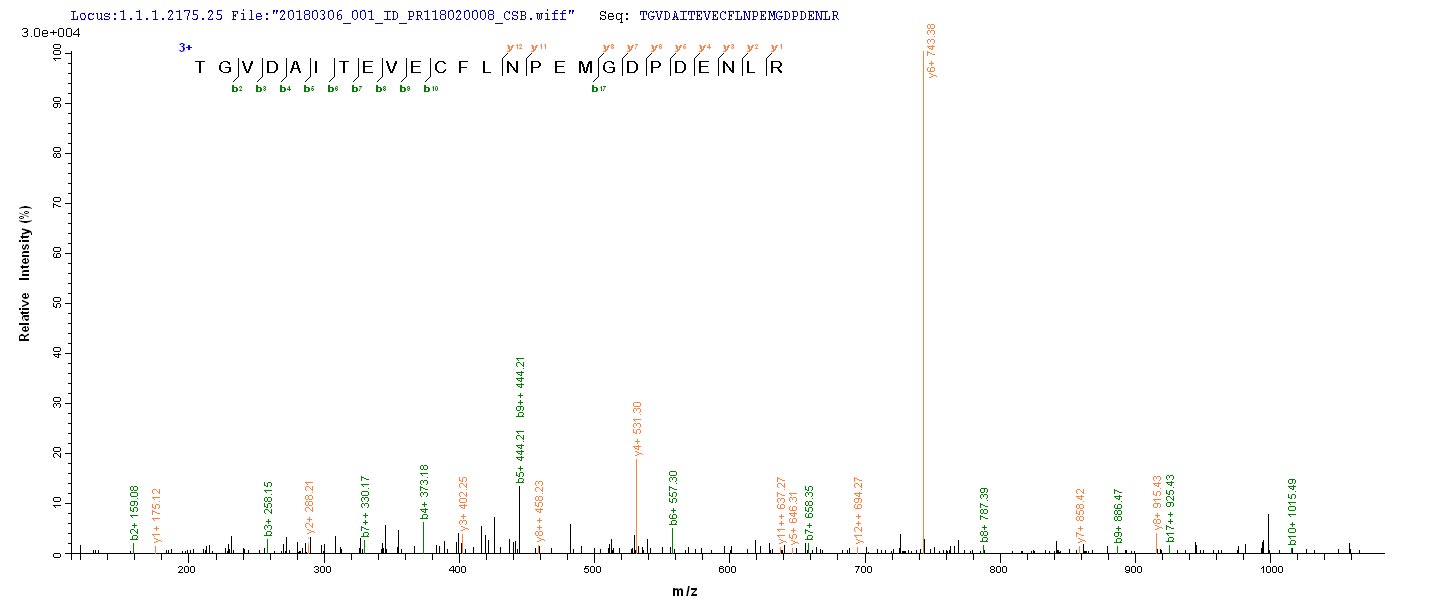Producing recombinant BK polyomavirus major capsid protein VP1 involves several steps, starting with the isolation of the target gene, which corresponds to the full-length BK polyomavirus VP1. The gene is linked with an N-terminal 10xHis-tag and C-terminal Myc-tag gene and then cloned into an expression vector. The vector is introduced into E. coli cells via transformation. The positive cells are cultured for protein expression. The recombinant BK polyomavirus VP1 protein is harvested from the cell lysate. The protein is purified using affinity chromatography. Its purity is over 85% as determined by SDS-PAGE.
The BK polyomavirus (BKPyV) VP1 protein is the major capsid protein of the BKPyV and is important for the viral structure and function. BKPyV VP1 plays a significant role in host cell receptor recognition, proper virion assembly, and determining antigenicity and receptor specificity [1][2][3]. It is essential for the viability and growth of the BKPyV [2]. Studies have shown that VP1 can package DNA independently of the minor structural proteins VP2 and VP3, showcasing its ability to play a critical role in virus assembly [4].
References:
[1] J. Nilsson, N. Miyazaki, X. Li, B. Wu, L. Hammar, T. Liet al., Structure and assembly of virus-like particle in bk polyomavirus, Journal of Virology, vol. 79, no. 9, p. 5337-5345, 2005. https://doi.org/10.1128/jvi.79.9.5337-5345.2005
[2] A. Dugan, M. Gasparovic, N. Tsomaia, D. Mierke, B. O’Hara, K. Manleyet al., Identification of amino acid residues in bk virus vp1 that are critical for viability and growth, Journal of Virology, vol. 81, no. 21, p. 11798-11808, 2007. https://doi.org/10.1128/jvi.01316-07
[3] U. Neu, J. Wang, D. Macejak, R. Garcea, & T. Stehle, Structures of the major capsid proteins of the human karolinska institutet and washington university polyomaviruses, Journal of Virology, vol. 85, no. 14, p. 7384-7392, 2011. https://doi.org/10.1128/jvi.00382-11
[4] E. Gillock, S. Rottinghaus, D. Chang, X. Cai, S. Smiley, K. Anet al., Polyomavirus major capsid protein vp1 is capable of packaging cellular dna when expressed in the baculovirus system, Journal of Virology, vol. 71, no. 4, p. 2857-2865, 1997. https://doi.org/10.1128/jvi.71.4.2857-2865.1997








